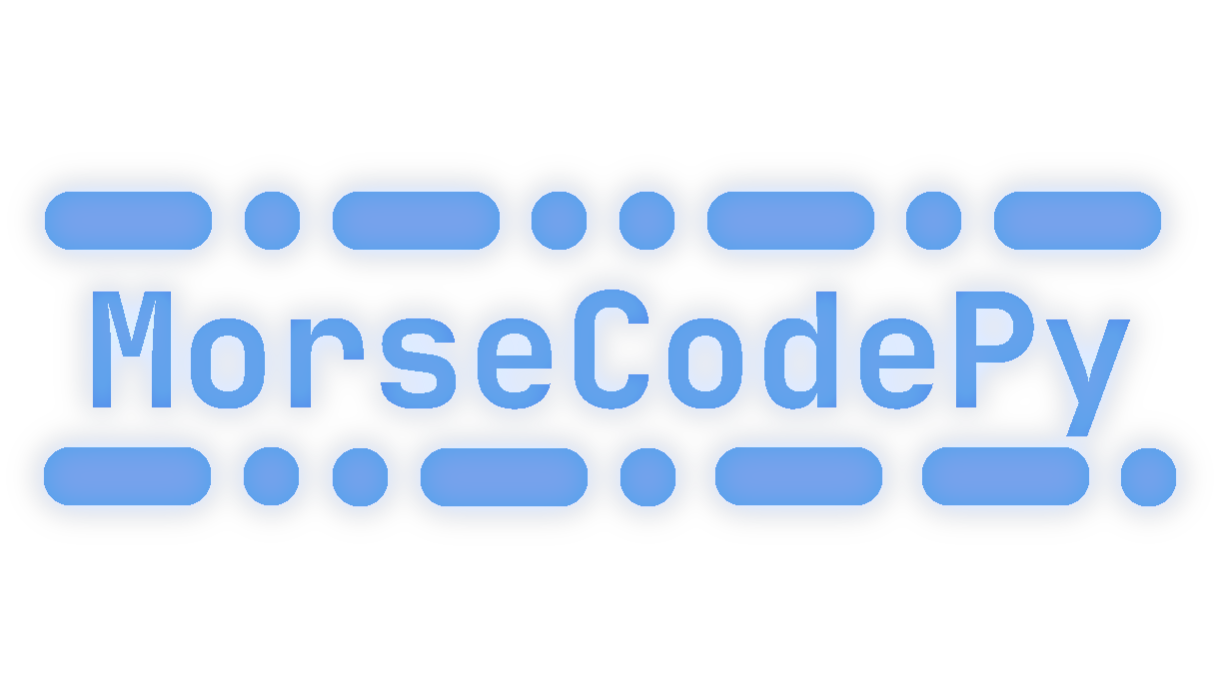MorseCodePy helps with encoding text into Morse code and decoding it back. It supports multiple languages, including English, Russian, Ukrainian, Spanish, French. It also has support for numbers and other special characters.
Encodes the string into Morse code
string: Input stringlanguage: Language for encoding (e.g.,english,french,spanish,russian,ukrainian,numbers,special)dot: (optional) Symbol representing dots (default is.)dash: (optional) Symbol representing dashes (default is-)separator: (optional) Symbol separating words (default is/)error: (optional) Symbol representing errors when the index is not found in the dictionary (default is*)markup: (optional) If True, shows the original character in brackets before its Morse code (default isFalse)
from MorseCodePy import encode
# Encoding a simple English sentence
encoded_string: str = encode('Python is fun!', language='english')
print(encoded_string)
# Output: .--. -.-- - .... --- -. / .. ... / ..-. ..- -. -.-.--from MorseCodePy import encode
# Encoding a Ukrainian sentence with custom dot and dash symbols and unsupported characters
encoded_string: str = encode('Привіт, світ! Ü', language='ukrainian', dot='*', dash='=', error='#')
print(encoded_string)
# Output: *==* *=* =*== *== ** = ==**== / *** *== ** = =*=*== / #from MorseCodePy import encode
# Encoding a Russian sentence with markup
encoded_string: str = encode('До встречи!', language='russian', markup=True)
print(encoded_string)
# Output: [Д] -.. [О] --- / [В] .-- [С] ... [Т] - [Р] .-. [Е] . [Ч] ---. [И] .. [!] -.-.--Decode the Morse code into a string
code: Input Morse code stringlanguage: Language for decoding (e.g.,english,french,spanish,russian,ukrainian,numbers,special)dot: (optional) Symbol representing dots (default is.)dash: (optional) Symbol representing dashes (default is-)separator(optional) Symbol separating words (default is/)error: (optional) Symbol representing errors when the index is not found in the dictionary (default is*)markup: (optional) If True, shows the original Morse code sequence in brackets before the decoded character (default isFalse)
from MorseCodePy import decode
# Decoding Morse code to Spanish text
decoded_string: str = decode('-- --- .-. ... . / -.-. --- -.. .', language='spanish')
print(decoded_string)
# Output: morse codefrom MorseCodePy import decode
# Decoding Morse code numbers with custom symbols
decoded_string: str = decode('****- **--- / *---- -----', language='numbers', dot='*', error='#')
print(decoded_string)
# Output: 42 10Print Morse code chart in the console
dot: (optional) Symbol representing dots (default is·)dash: (optional) Symbol representing dashes (default is-)
from MorseCodePy import chart
chart(dot='.', dash='_')MorseCodePy also has terminal commands! You can encode, decode, view a Morse code chart, list supported languages, and more directly from the terminal. All the commands are very similar to the original Python function, so I recommend reading the documentation for them first.
Encode text into Morse code
Command: morsecodepy encode <text> <language> [--dot DOT] [--dash DASH] [--separator SEPARATOR] [--error ERROR] [--markup]
morsecodepy encode "Python is fun!" englishDecode Morse code into text
Command: morsecodepy decode <code> <language> [--dot DOT] [--dash DASH] [--separator SEPARATOR] [--error ERROR] [--markup]
morsecodepy decode "-- --- .-. ... . / -.-. --- -.. ." spanishPrint out the code chart
Command: morsecodepy chart [--dot DOT] [--dash DASH]
morsecodepy chart --dot '*' --dash '='Print out the list of supported languages
Command: morsecodepy languages


